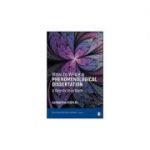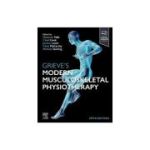How to Write a Phenomenological Dissertation A Step-by-Step Guide

Preț: 126,00 lei
Disponibilitate: la comandă
Autor: Katarzyna Peoples
ISBN: 9781544328362
Editura: Sage Publishing
Anul publicarii: 2020
Pagini: 192
Categoria: Education & Skills
DESCRIERE
Conducting phenomenological research for dissertations can be an involved and challenging process, and writing it up is often the most challenging part. How to Write a Phenomenological Dissertation gives students practical, applied advice on how to structure and develop each chapter of the dissertation specifically for phenomenological research.
Phenomenology is about personal experience and personal experience varies from researcher to researcher. However, this variation is a big source of confusion for new researchers in the social, behavioral, or health sciences. This brief text is written in a simple, step-by-step fashion to account for this flexibility and variation while also providing structure necessary for a successful dissertation. Broken up into chapters that follow each chapter of the dissertation, this text logically addresses the various parts of phenomenological research, starting with ensuring phenomenology is the right method for your research, writing the literature review, going through methods and results sections to analysis and discussion. The author, using experience gleaned from supervising phenomenological dissertations for many years, gives time-tested advice on how structure the dissertation to fit into more common frameworks, using checklists and tables throughout. Each chapter includes a list of helpful resources for students to use alongside this book with specific information on methods and research. Unique to this text is a chapter on creating your own phenomenological method which allows students to expand their viewpoints and experiment in future studies after the dissertation.
Phenomenology is about personal experience and personal experience varies from researcher to researcher. However, this variation is a big source of confusion for new researchers in the social, behavioral, or health sciences. This brief text is written in a simple, step-by-step fashion to account for this flexibility and variation while also providing structure necessary for a successful dissertation. Broken up into chapters that follow each chapter of the dissertation, this text logically addresses the various parts of phenomenological research, starting with ensuring phenomenology is the right method for your research, writing the literature review, going through methods and results sections to analysis and discussion. The author, using experience gleaned from supervising phenomenological dissertations for many years, gives time-tested advice on how structure the dissertation to fit into more common frameworks, using checklists and tables throughout. Each chapter includes a list of helpful resources for students to use alongside this book with specific information on methods and research. Unique to this text is a chapter on creating your own phenomenological method which allows students to expand their viewpoints and experiment in future studies after the dissertation.
CONTENTS
Acknowledgments
About the Author
Part I: Before the Dissertation
Chapter 1: How to Begin
What Is Phenomenological Research?
Purpose of This Book
Organization of This Book
Literature Review
Theoretical Framework
References
Part II: Writing the Dissertation
Chapter 2: Introduction and Literature Review
Beginning the Literature Review: What’s Your Topic?
Literature Search Strategy
Create an Outline
Writing the First Dissertation Chapter: The Introduction
Problem Statement
Purpose Statement
Research Questions
Theoretical Framework
Definitions
Assumptions
Delimitations and Limitations
Summary Sections
Completing the Literature Review
References and Suggested Reading
Chapter 3: Methodology
Introduction
Design and Rationale
Researcher Role
Participants
Instrumentation
Procedures
Data Collection
Data Analysis
Using Software
Validity and Reliability
Ethics
Summary
Write the Abstract
References and Resources
Chapter 4: Results
Introduction
Setting
Participant Demographics
Data Collection
Findings
Connecting to the Theoretical Framework
Validity and Reliability
Going Back to Chapter 3
Summary
Appendices
References and Resources
Chapter 5: Discussion
Introduction
Interpretation of Findings: A Dialogue with the Literature
Including Theory Throughout
Limitations
Recommendations for Future Research
Implications
Conclusion
Update the Abstract
Example of Abstract
References and Resources
Part III: After your Dissertation
Chapter 6: Other Phenomenological Methods
Existential Phenomenology
Critical Narrative Analysis (Langdridge)
Dialogal Approach (Halling, Leifer, & Rowe)
Dallas Approach (Garza)
Embodied Life-World Approach (Todres)
Interpretive Phenomenological Analysis (Smith, Flowers, & Larkin)
Life-World Approach (Ashworth)
Lived Experience Human Science Inquiry (van Manen)
Reflective Life-World Approach (Dahlberg)
References
Chapter 7: Creating Your Own Phenomenological Method
Giorgi’s Five Basic Steps
van Manen’s Four Reflections
Results
Participant Demographics
General Description
Reflection
References and Resources
Appendix A: Recruitment Flyer
Appendix B: Screening
Appendix C: Semi-Structured Interview Guide
Appendix D: Consent to Participate
Appendix E: Sample Dissertation Literature Review
Index
Categorii de carte
-Comandă specială
-Edituri
-Promo
-Publicaţii Callisto
-Cărţi noi
-- 670,95 leiPRP: 745,50 lei
- 226,80 leiPRP: 252,00 lei
- 463,05 leiPRP: 514,50 lei
Promoţii
-- 428,40 leiPRP: 714,00 lei
- 670,95 leiPRP: 745,50 lei
- 226,80 leiPRP: 252,00 lei












REVIEW-URI